calsfoundation@cals.org
Tull (Grant County)
| Latitude and Longitude: | 34°26’52″N 092°34’35″W |
| Elevation: | 351 feet |
| Area: | 4.03 square miles (2020 Census) |
| Population: | 484 (2020 Census) |
| Incorporation Date: | September 2, 1966 |
Historical Population as per the U.S. Census:
|
1810 |
1820 |
1830 |
1840 |
1850 |
1860 |
1870 |
1880 |
1890 |
1900 |
|
– |
– |
– |
– |
– |
– |
– |
– |
– |
– |
|
1910 |
1920 |
1930 |
1940 |
1950 |
1960 |
1970 |
1980 |
1990 |
2000 |
|
– |
– |
– |
– |
– |
– |
179 |
281 |
313 |
358 |
|
2010 |
2020 |
|
|
|
|
|
|
|
|
|
448 |
484 |
|
|
|
|
|
|
|
|
Tull is a town in northwestern Grant County. Incorporated in 1966, Tull had already been an established community for more than 100 years. It is best known as the location of Old Folks’ Singing, an annual event that has been held every May since 1885.
Tull is named for the John, Arch, and Abe Tull family, who made their homes in the area by 1841. Other early settlers include Henry Bennett, George Keesee, James Cox, Isma Kellum, Lott Williams, and Eli Lindsey, a pioneer in Arkansas Methodism. Charlie Jordan operated a horse-powered cotton gin in the area between 1836 and 1860. Ephraim Burrow operated a water-powered mill between 1845 and 1860. Jim Barnes had a tanning yard said to date back to 1825. It appears that some of these businesses closed around the beginning of the Civil War, perhaps because the proprietors enlisted to serve in the Confederate army. A Christian Church was organized some time before the Civil War.
Following the war, several African-American families settled near Tull. These families included those of Loss Bryant, Dan Webster, and Jack Pumphrey. This is striking, since Grant County has been predominantly white since its creation in 1869.
A Methodist church was established in Tull in 1885. The singing and meal that accompanied the opening of the church was so successful that it became an annual festival. The origin of the name “Old Folks’ Singing” is unknown (the earliest surviving record book is from 1921 and calls the event “Old Folks’ Singing Convention”), but an apocryphal story holds that the singing from the old Christian Harmony songbooks was done in the morning to please the elder residents. After a midday meal, the afternoon singing consists of songs from the newer Cokesbury Worship Hymnal.
A U.S. post office opened in Tull in 1887, with John M. Tull (son of the earlier settler) as the first postmaster. The post office was closed in 1915, with mail rerouted to Detonti (Saline County). That post office was also closed in 1955. Tull had a public school for many years, but it was consolidated into the Bauxite (Saline County) school system around 1960.
After several months of planning, the town of Tull was incorporated in September 1966. The principal reason for incorporation was to create a water system for the community. An agreement was made that year to connect with the water system of Benton (Saline County) eight miles away; Benton drew its water from the Saline River, making the linkage more affordable than the cost of drilling a municipal well at Tull. At the time of its incorporation, Tull had one general store, one service station, and three churches, and was building a community center at the site of the former school.
With the expansion of businesses along the Interstate 30 corridor a few miles away, Tull’s economic resources were considerably depleted by 2010. Several churches offer weekly services, however. Old Folks’ Singing brings former residents and many visitors back to the town every May; the event is nondenominational and uses the historic Ebenezer United Methodist Church building. The population of Tull was 448 in 2010, of whom 436 were white, one was African American, and thirteen were Hispanic; the total population had risen to 484 by 2020.
For additional information:
“100th Anniversary Old Folks Singing.” Tull, AR: 1985.
Goolsby, Elwin L. Our Timberland Home: A History of Grant County. Sheridan, AR: Grant County Museum, 1984.
Old Folks’ Singing Planning Committee. Blest Be the Tie that Binds: 125 Years of Old Folks’ Singing in Tull, Arkansas: 1885–2010. Benton, AR: 2010.
Stuckey, Alma G. “Arkansas’ Newest City Makes Plans.” Arkansas Democrat Magazine, September 11, 1966, pp. 5–6.
Walker, Joe. “Survivors Recall Deadly 1940 Tull Tornado.” Grassroots: Journal of the Grant County Museum (August 2019): 2–4.
Steven Teske
Butler Center for Arkansas Studies
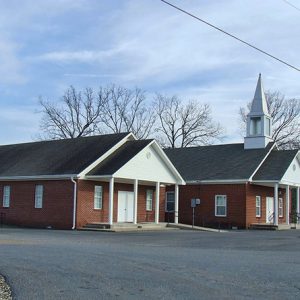
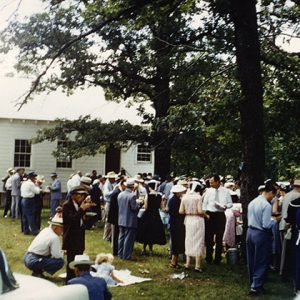
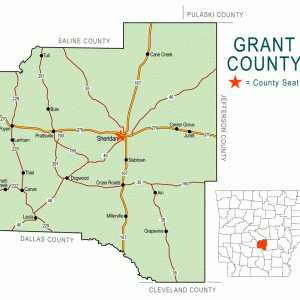
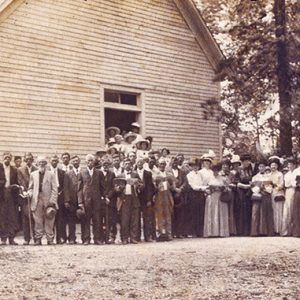
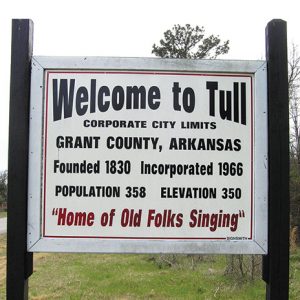
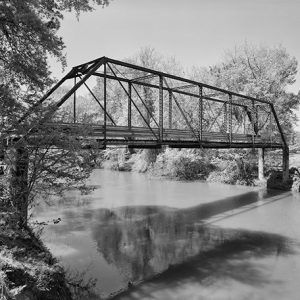




Comments
No comments on this entry yet.